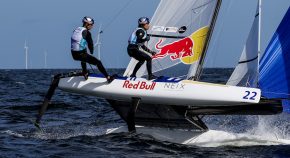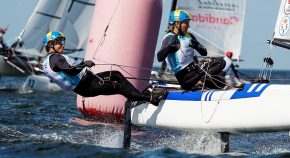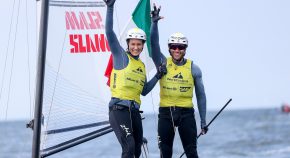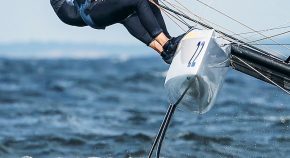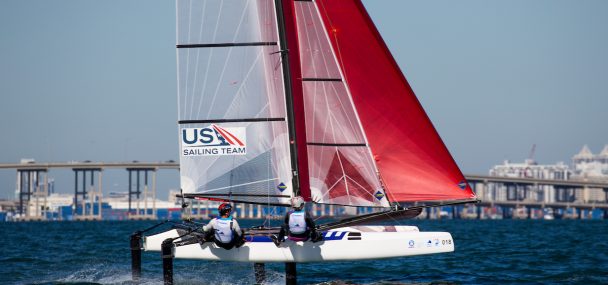
Check in with the USA Nacra Squads Coach Mike Ingham
After coaching the American Sonar Paralympic team to a silver medal at the Rio 2016 Games, Mike Ingham continues to work with the US Sailing Team toward Tokyo 2020. His task now is with the mixed multihull event in which the US finished off the Rio podium in 8th. Scuttlebutt editor Craig Leweck checked in with Mike for an update.
The Nacra 17 was newly designed and selected as the multihull equipment for Rio, so the lead up to the Games was all about sorting out how to sail the boat. But now with the foils being redesigned, are we starting over again?
Yes and no. There’s certain aspects that are the same, but the downwind is completely different. The boat was initially designed before foiling became widespread, so the new foils now lift the boat but there are still limitations in how you can adjust the foil angle.
For example, the Moth has the bow wand that automatically changes the foil’s angle of attack to promote level flight, but the Nacra doesn’t have that feature. While there are adjustments, you can’t do it on the fly so you must rely on crew weight. To trim the centerboards, which are your lift agents, the sailors are running up and down the hull. It’s really interesting, and part of the reason it’s full on. They’re just moving all the time.
So the learning curve continues?
Yes it does. For example, in most boats, when it gets crazy windy downwind and everything is out of control, you typically move back in the boat as far as you can. You get the bow up and ease the sheet to keep from plowing into the back of waves. But in the Nacra, you do the opposite.
When you’re ripping along and all of a sudden, the ride height’s too high, you must adjust the foil angle which means moving forward and trimming in to get the bow down. If you ease the sheet and/or go back, the bow goes up and the whole boat can get launched and then land very hard. So it’s against every instinct you have. You run forward and trim in when conditions are at their worst.
Before the foils were changed, there was some lift but there were also some control problems. Have the new foils helped with safety?
The previous blade design allowed for skimming, which reduced displacement but did not fully lift the hulls from the water. And, as you note, there were at times control problems which could lead to some massive wipeouts.
With the newly designed lifting foils, it’s offered more control over your ride height. Before you could only skim, and if something went out of control, the boat could get very unpredictable. What the boat lacked was the elevators in the back to provide stability. Now, along with newly designed centerboards to provide full flight, there are T rudders which have the horizontal foil on the bottom.
So the beast has been tamed and the achievable speeds are very impressive. My RIB with a 70hp outboard can be flat out and struggle to keep up. The boats are very fast, but that does heighten the safety issue. The horizontal foil of the T rudder is very sharp and adds an element of danger. If you fall off, you can get run over as the rudder foil sticks out beyond the hull.
It is hard to be perfect all the time, and fast boats have a tendency to stop fast too.
There’s two things that can lead to failure. There’s cavitation and ventilation. Cavitation is essentially when the water boils. That occurs at very fast speeds, but we’re not going that fast. However, ventilation is air coming down from the top and we do that. When that happens, we come off the foils and come crashing down. You don’t stop completely. You’re still moving when you come down. We call it a splat cause you’re foiling high and then all of a sudden you slap the water with your hull but you’re still moving so it isn’t violent.
But sailors are still getting injured, which we saw when 2016 Olympian Bora Gulari sliced his hand when getting flung forward.
There are exceptions. He stuffed his bows pretty hard, and when the boat stops the sailors can get flung forward. The failure mode for the foiling isn’t often a hard stuff but that time there were some variables that went against him. When the boat stops, the sailors are still going 25 knots or more and everything in front of them poses a threat.
When things go wrong it can be violent, so we’re paying attention to what we wear out there to prevent what we can prevented. Helmets and wetsuits are standard and we’re working on improving the body armor to increase protection. However, it is hard to predict where the body may collide so it will be hard to fully eliminate risk.
With the possibility of injury, we’re prepared if something goes wrong. We carry the first aid equipment and have the training, but we’ve just done three months of hard training and there’s been no problems. The other day we were getting puffs in the upper 20s, with speeds at about 27 knots, and there was no danger. We’re learning a lot about how to sail the boats really well that I don’t think we understood before.
There’s been some shuffling of sailors amid your top teams.
Yes there have. It’s a really interesting dynamic. The Nara 17 is the only Olympic class that’s of mixed gender and we’re learning how we need to treat it more like a business. There’s a world of difference between teams assembled for a particular championship, and teams assembled for Olympic campaigns.
When you’re sailing 200 days a year plus all the other logistics and living and traveling together on top of that, issues can surface that can’t be overcome. We have four main teams, and three of them have reshuffled their crews for various reasons.
Because of the mixed gender format, they weren’t always very familiar with each other. Perhaps they decided to team up based on a couple weekends of sailing, and while it might look good on paper, perhaps there wasn’t enough time to learn if it will work.
In your position, how much of a relationship counselor do you become?
I look at running this, we’re calling it a platform of four boats, as a very holistic process. I’m not just a coach. I’m running a business and I need to do whatever it takes to make us the best in the world and that includes if somebody needs help with their relationship. I’m no expert at it but sometimes a situation is obvious enough that I can help out or just play mediator. This is only one piece of many, many, many pieces. So, yes, I get involved in whatever is needed for us to succeed.
However, I think it’s really important for me, in the end, to let any change be their decision. I try not to encourage change, just like I try not to tell them who they should sail with. In the end, this is a very personal relationship and there’s a limit as to what a coach should do and I find that’s crossing the line. I need to be supportive and then they know when it’s time to split up. I don’t need to tell them.
Running a platform of multiple teams must require some cooperation.
The success for the Nacra 17 program in the US is that this group works together, which isn’t necessarily easy as only one team will go to the Games. However, this is the best approach, not just for Tokyo 2020 but also to develop institutional knowledge for the future so the next generation that comes along isn’t starting from scratch.
Ideally we create a powerhouse platform so they all just plain get better and beyond the world level, but at some point they are competing against each other to qualify for the Games. However, I believe the same team would win the trials regardless but they’ll be in a much better place than if they all went their own way.
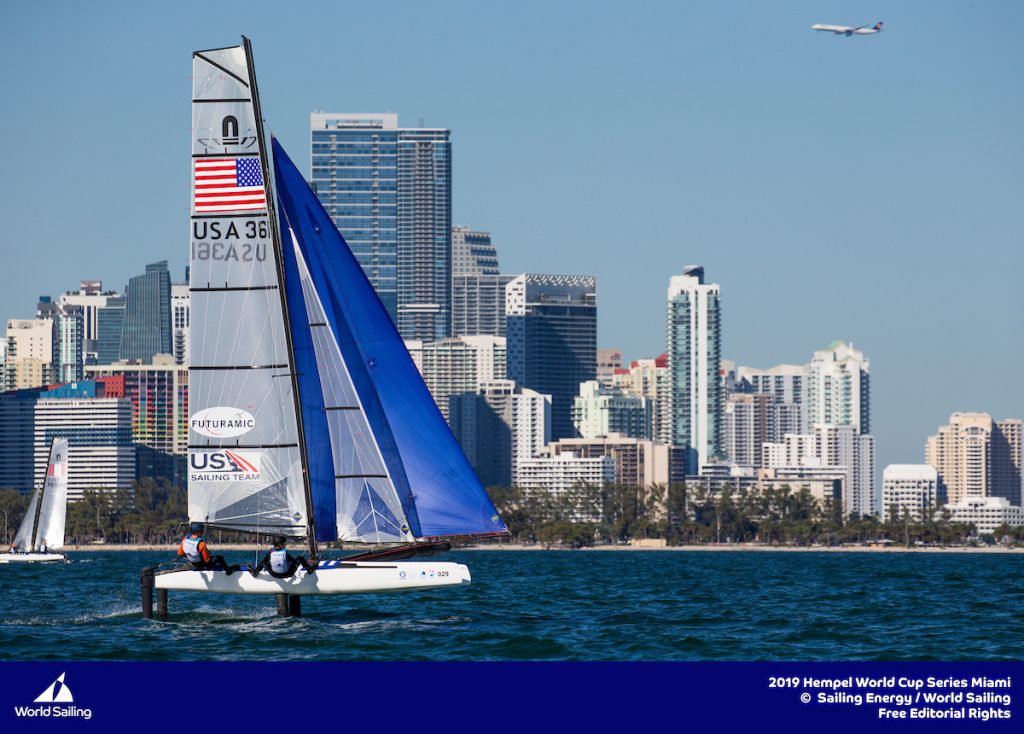
From 27 January to 3 February 2019, Miami will host sailors for the second round of the 2019 Hempel World Cup Series in Coconut Grove. More than 650 sailors from 60 nations will race across the 10 Olympic Events. ©JESUS RENEDO/SAILING ENERGY/WORLD SAILING
29 January, 2019.
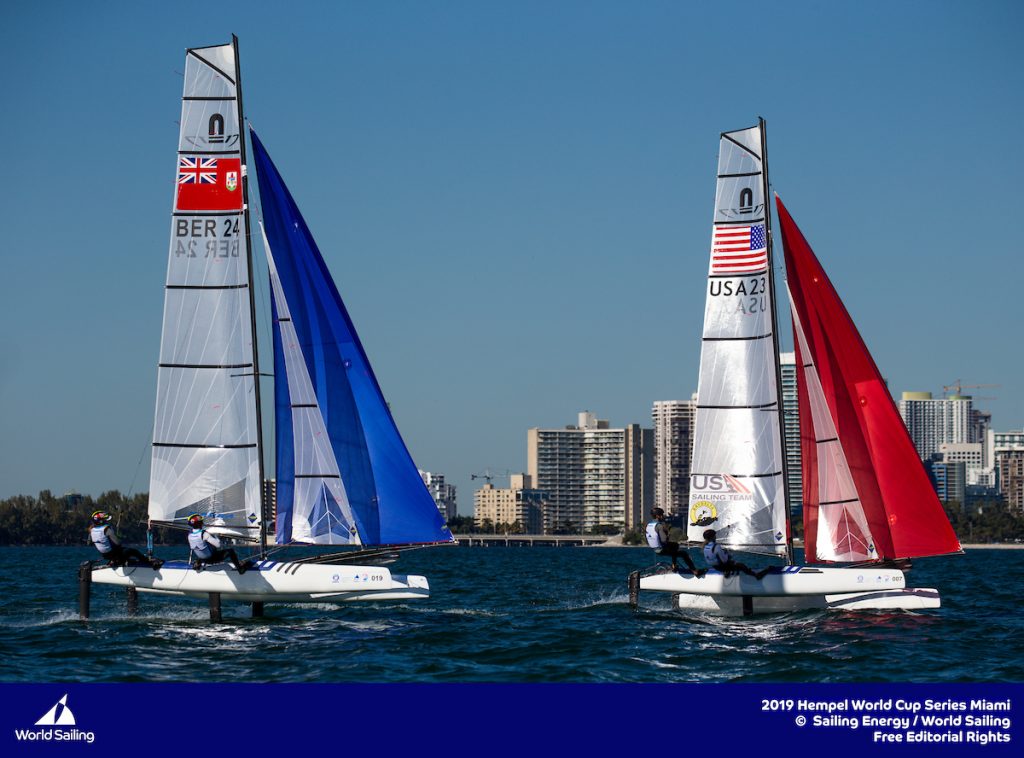
From 27 January to 3 February 2019, Miami will host sailors for the second round of the 2019 Hempel World Cup Series in Coconut Grove. More than 650 sailors from 60 nations will race across the 10 Olympic Events. ©JESUS RENEDO/SAILING ENERGY/WORLD SAILING
29 January, 2019.
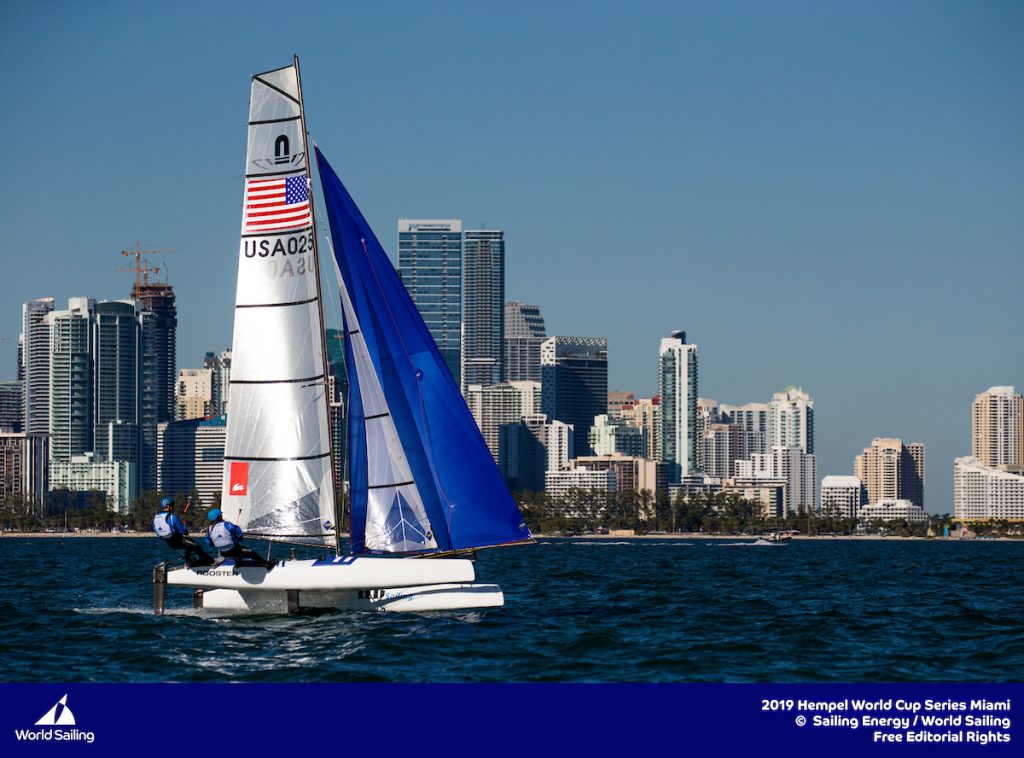
From 27 January to 3 February 2019, Miami will host sailors for the second round of the 2019 Hempel World Cup Series in Coconut Grove. More than 650 sailors from 60 nations will race across the 10 Olympic Events. ©JESUS RENEDO/SAILING ENERGY/WORLD SAILING
29 January, 2019.

